Kanazawa exquisite Garden Tour
Kanazawa's gardens have created a unique beauty through a fusion of samurai and tea ceremony cultures. In addition to Kenrokuen Garden, there are many other famous gardens that continue to grow in beauty, and new gardens are being created to preserve them for future generations. Take your time to tour around and enjoy the different beauty of each garden.
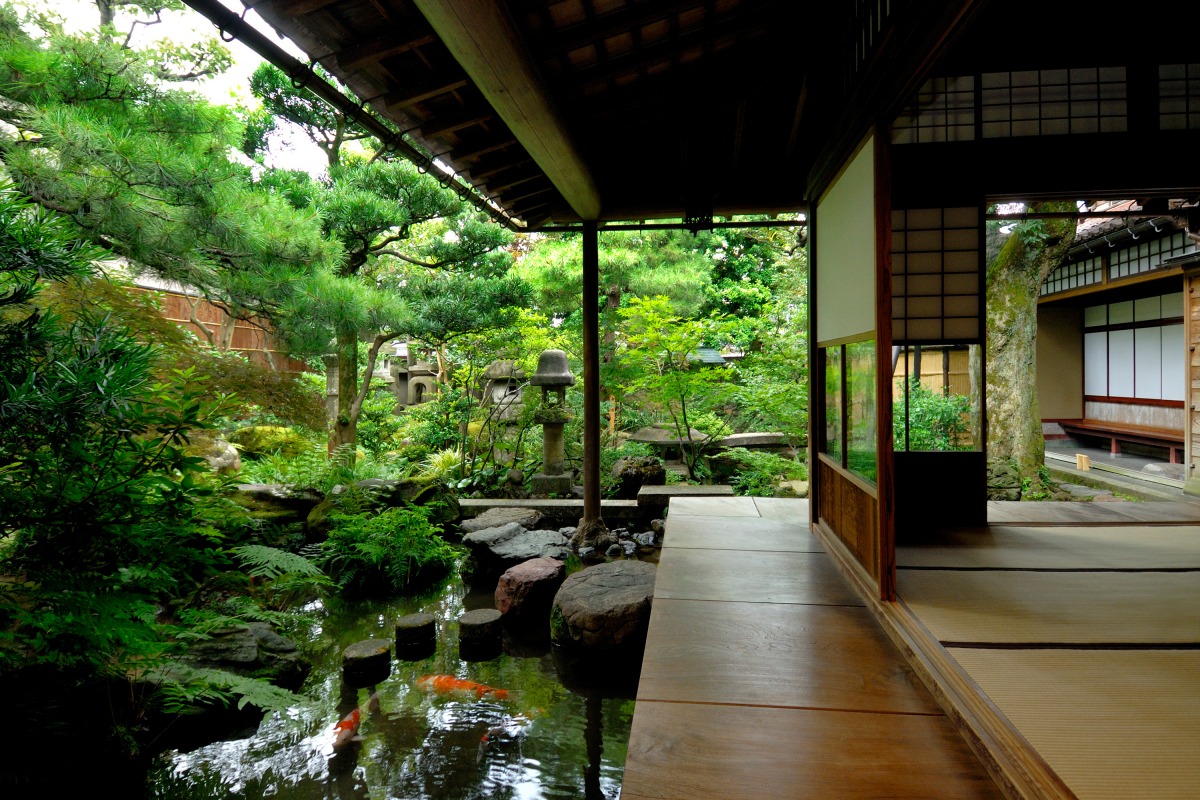
Get off at "Hashiba-cho (Kinjohro-mae)" bus stop.
The Old Site of Mr. Kurando Terashima's House
Kurando was a middle-class samurai of the Maeda family. It is said that this house was constructed in the latter half of the 18th century.
The existing mansion, storehouse, and mud wall tell the actual condition of the middle-class samurai residence. Dodan tsutsuji (a kind of azalea), which blooms from the end of April until early in May and the autumn leaves are the highlights of the garden. Kurando was a painter as well, and his works are exhibited in the house.
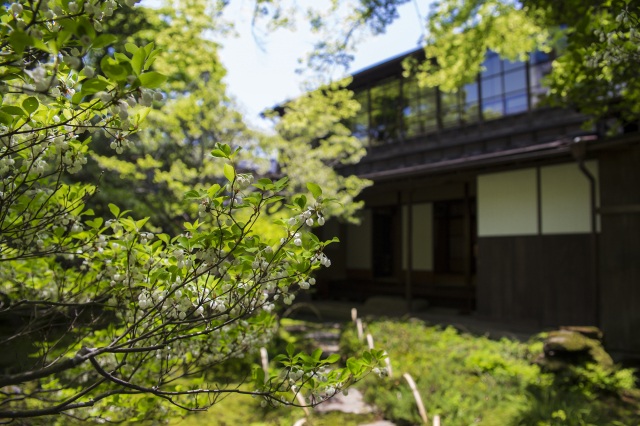
Nishida Family’s Garden Gyokusen-en
Wakita Naokata, vassal in the Kaga Clan, started designing and constructing the garden in the middle of the 17th century, and four generations carried on the landscaping of the garden. Naokata was born in Korea and raised by the Maeda family in Japan by a twist of fate. There are a large number of plants in the garden, including a huge Korean pentaphylla pine that Naokata and his father raised after they obtained the seed from Korea.
A visitor can enjoy a powdered green tea and experience a Japanese traditional tea ceremony subject to reservation.
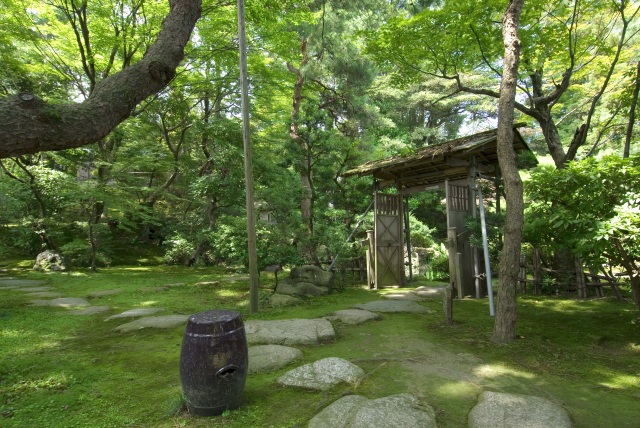
Kenrokuen Garden
A Beautiful and Famous Garden in the Heart of Kanazawa
Considered one of Japan’s three most beautiful gardens, Kenrokuen Garden is a must-visit location in Kanazawa. The name Kenrokuen means “having six factors”, representing the attributes which bring out the garden’s stunning beauty: spaciousness, tranquility, artifice, antiquity, water sources and magnificent views.The garden has an area of 11.4 hectares and is located on the heights of the central part of Kanazawa next to Kanazawa Castle. The Maeda family, who ruled the Kaga Domain (the present Ishikawa and Toyama areas) in feudal times, maintained the garden from generation to generation. It is regarded as one of the most beautiful feudal lords' gardens in Japan.
One of Kenrokuen Garden’s most stunning attractions is its large artificial pond called Kasumigaike. Located near the center of the pond is Horai Island. The pond is often seen to symbolize the sea and Horai Island a sacred island out at sea, on which an ageless hermit with miraculous power was believed to live. As a result, the pond and the island were constructed to symbolize long life and eternal prosperity for the lord.
There are many other gorgeous features to enjoy in the garden, including the flowers and trees that grow there, such as plum and cherry blossoms in spring, azaleas and irises early in summer, and colorful red and yellow leaves in autumn.
In Winter, visitors can enjoy the snow-covered landscapes with yukitsuri (which means “snow hanging”). yukitsuri is a traditional technique for protecting the branches of the pine trees in the garden from heavy snow; trees are given support by bamboo poles and rope arranged a captivating conical layout.
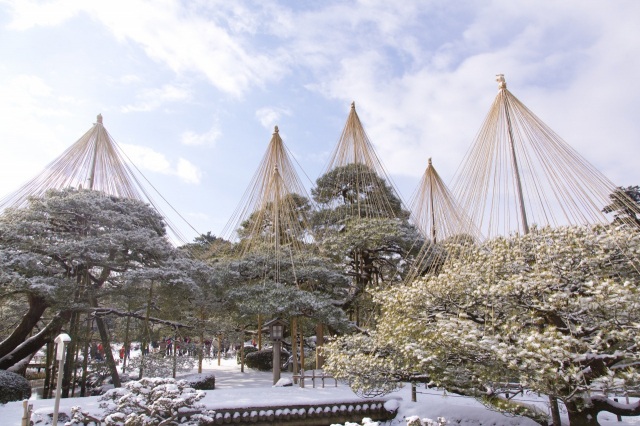
Seisonkaku
An exquisite mansion gifted to the lord's mother
Seisonkaku is a villa that the 13th lord of the Maeda family built for his mother in Kenrokuen Garden in 1863. Fine techniques in a wide variety are used for the inner pillars and walls of Seisonkaku. These techniques include a wooden panel with openwork carvings of flowers and birds and a coffered ceiling for the guest chamber called "Ekken-no-ma." From these, visitors will know the status of the then Maeda family.
Furthermore, Seisonkaku exhibits articles with a long and distinguished history, such as dolls for the Japanese Girls' Festival and furniture.
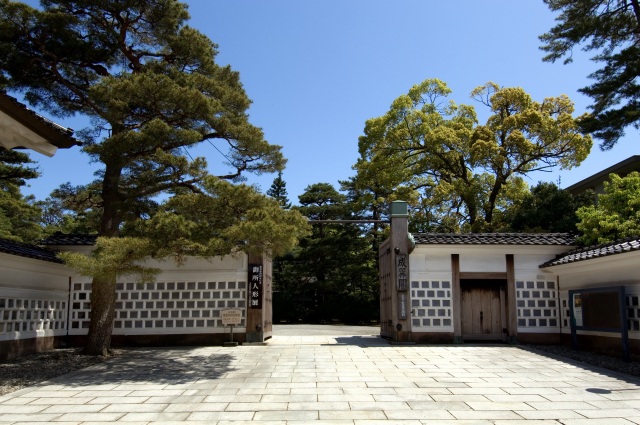
Bijutsu no komichi (Path of Art), Midori no komichi (Path of Green)
Walking paths to fully experience the changes of the four seasons
The stone stairway "Bijutsu no Komichi(Path of Art)" connecting the Ishikawa Prefectural Museum of Art and the Nakamura Memorial Museum is parallel to the Tatsumi Waterway flowing from Kenrokuen Garden, creating an atmosphere that will make you forget about the hustle and bustle of daily life.
Walking along the "Midori no Komichi(Path of Green)" leading from Kanazawa Nakamura Memorial Museum to D.T. Suzuki Museum, you will find Honda Park, where you can see the "Former Honda Family Nagaya-mon Gate," a registered tangible cultural property of Japan. The Shofukaku Garden is also located next to the park, where you can feel the atmosphere of a samurai family's garden in those days.
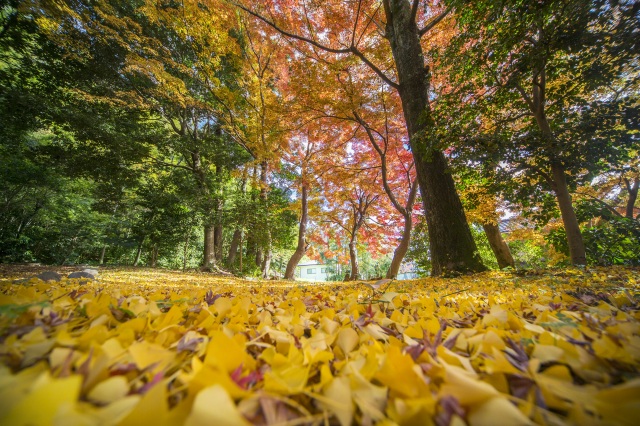
Shofukaku Garden
Remains of a samurai garden that retains the atmosphere of the garden when it was first created
It is said that the garden was created in the early Edo period(1603-1690) under the guidance of Hou, a son of Kanamori Souwa, utilizing an old swamp and natural forest.
The garden is in harmony with the *Honda Forest that forms the backdrop, creating a quiet and profound garden space.
* The Honda clan was the primary family of the Kaga Hakka, or the eight chief retainer families of the Kaga Domain
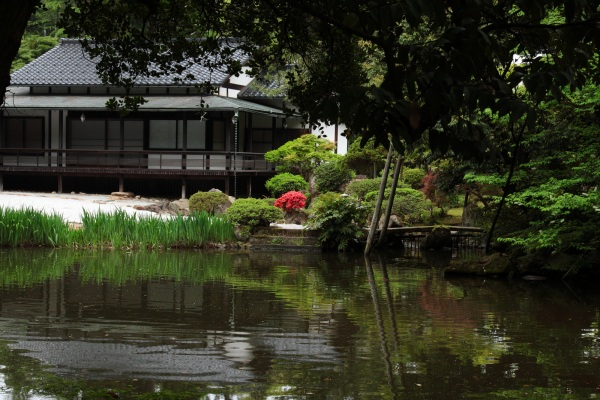
Get off at "Korinbo (Former Nichigin-mae)" bus stop.
Nomura-ke Samurai Residence Garden
The remains of the Nomura family are also open to public. The family successively held executive posts from generation to generation under rule of the Maeda family.
The house has a coffered ceiling totally made of Japanese cypress and fusuma-e (paintings on sliding-door panels) created by the Maeda family's personal painter. The garden inside the residence has a Japanese bayberry over 400 years old and a meandering stream surrounded by ancient and strangely shaped rocks.
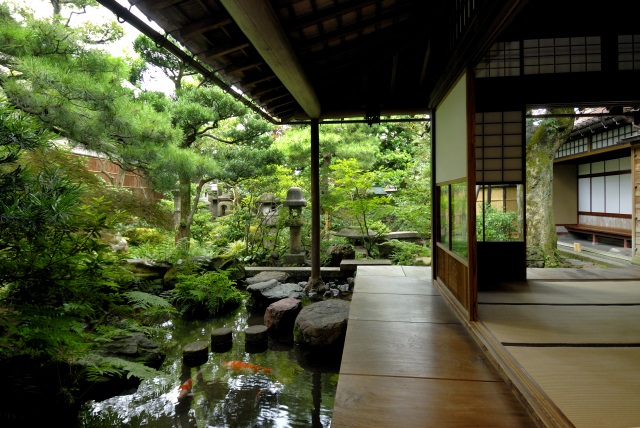
Senda-ke Garden
Now Open to the Public from April 2025! Directly across from the Nomura Samurai Residence.
A hidden gem in the heart of the historic Nagamachi Samurai District – officially recognized as a Cultural Heritage Site by the City of Kanazawa.
Nestled within the preserved Nagamachi Samurai District, the Senda-ke Garden is a peaceful retreat where visitors can enjoy the beauty of Japanese tradition with both the eyes and ears. This exquisite strolling garden was created in 1894 by Norifumi SENDA, a former samurai of the Kaga Domain, who was inspired by the famous Kenrokuen Garden.
At the center of the garden lies a tranquil pond, carefully fed by a nearby irrigation canal called the Ōno-shō waterway. The water flows gently around an artificial hill before returning to the canal—bringing a continuous sense of life and calm to the garden.
Throughout the garden, you will discover traditional features that reflect the elegance of Kenrokuen, such as:
A Yukimi-dōrō (snow-viewing lantern), designed to reflect beautifully on the pond’s surface.
A stone bridge made from rare Akatomuro stone.
Decorative stones and pagodas inspired by the Seven Gods of Fortune, placed around the hill.
After a century, the garden's waterfall has been restored, and the gentle sound of flowing water now enhances the tranquil atmosphere once again.
The garden features carefully maintained Japanese black and red pines, as well as colorful azaleas and rhododendrons that bloom spectacularly from spring to early summer.
Adding to the sensory experience:
The soft, rhythmic sound of a shishi-odoshi (a bamboo water feature used to scare away animals), creates a moment of stillness.
A unique suikinkutsu (literally “water koto cave”) offers a musical surprise—a buried pot that resonates with the delicate sound of dripping water, echoing like a Japanese harp.
The site also includes a small museum featuring artifacts and photographs related to Norifumi SENDA. Visitors can gain insight into how this former samurai lived through the dramatic shift from the late Edo period to the modern Meiji era.
Take a moment to step away from the modern world and immerse yourself in the quiet flow of time at this rare and beautiful garden.
